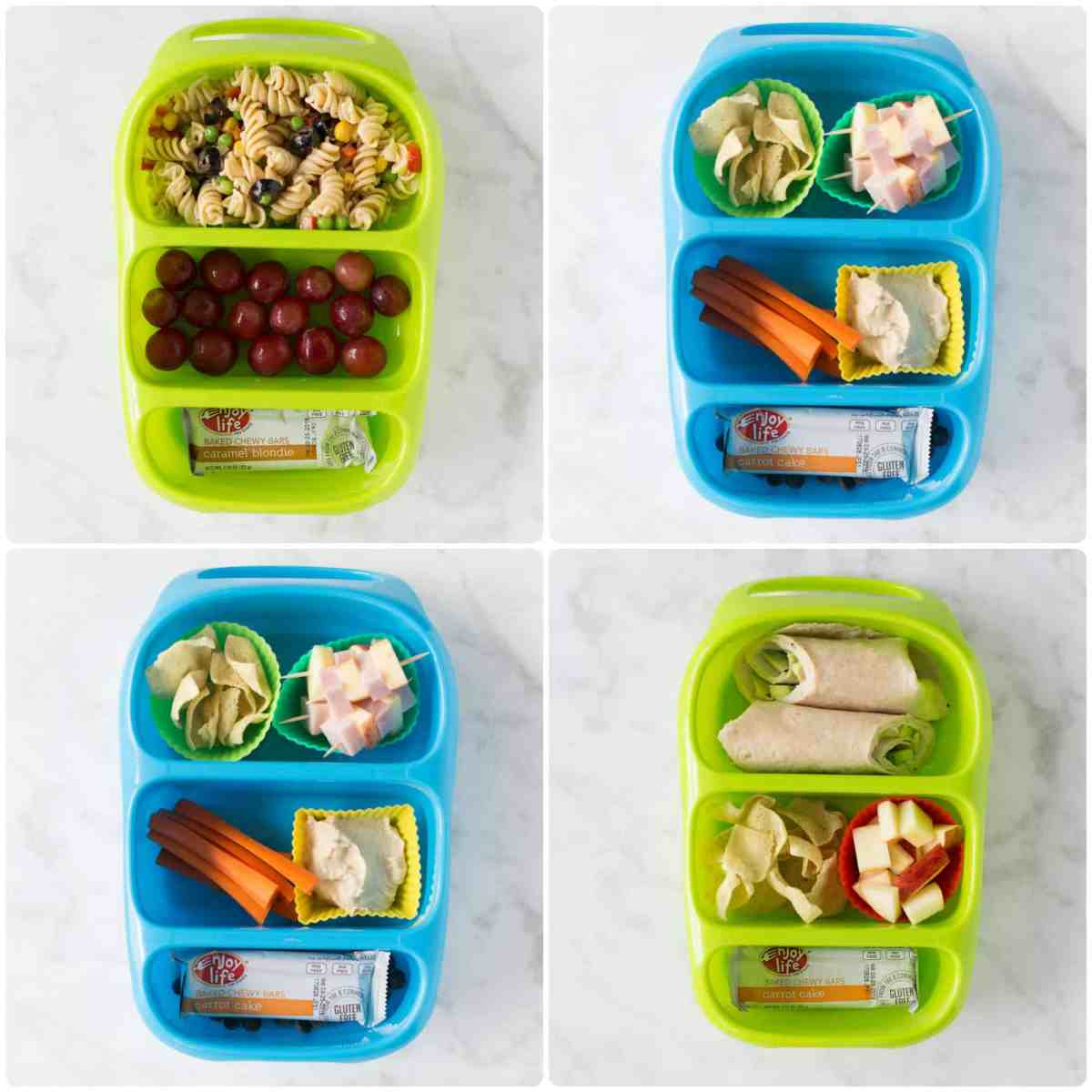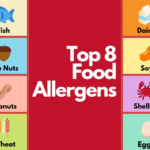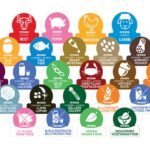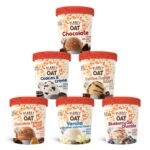Imagine a midday meal that’s not only light and healthy but also caters to various dietary needs. Picture vibrant salads bursting with color and flavor, quick and easy recipes that don’t compromise on nutrition, and satisfying meals that are free from common allergens. This guide unveils a world of delicious and allergy-conscious lunch options, transforming the midday break into a refreshing and revitalizing experience. We’ll explore creative recipes from diverse cuisines, practical packing tips for work or school, and clever ways to repurpose leftover dinners into exciting lunches, all while keeping things light, healthy, and allergy-friendly.
From simple, speedy recipes perfect for busy weekdays to more elaborate dishes for a leisurely lunch, we’ll cover a wide range of options to suit every taste and schedule. Learn how to effortlessly incorporate nutritious ingredients, manage allergens effectively, and create visually appealing meals that are as delightful to look at as they are to eat. Discover the secrets to packing lunches that stay fresh and avoid cross-contamination, ensuring a safe and enjoyable midday meal wherever you are.
Packing Allergy-Safe Lunches for Work or School
Packing allergy-friendly lunches requires careful planning and execution to ensure both safety and satisfaction. This involves selecting appropriate foods, using suitable containers, and employing strategies to maintain freshness and prevent cross-contamination. The goal is to create delicious and nutritious meals that are free from allergens and easy to transport.
Three Allergy-Friendly Lunch Examples
Imagine three vibrant lunchboxes, each carefully curated to avoid common allergens. The first, a vibrant Mediterranean-inspired lunch, features a colorful quinoa salad with chopped cucumbers, bell peppers, and Kalamata olives, dressed in a lemon-herb vinaigrette. A side of hummus with whole-wheat pita bread provides protein and healthy fats. For dessert, a juicy orange offers a refreshing burst of vitamin C. The second lunchbox presents a delightful Asian-inspired meal: a bed of brown rice topped with stir-fried tofu, broccoli florets, and shredded carrots, all seasoned with a light soy sauce (ensure it’s certified allergen-free). A small container of edamame adds extra protein. A crisp apple provides a satisfying crunch. Finally, the third lunchbox offers a hearty and satisfying southwestern-style lunch: black bean soup (check for allergen-free ingredients) in a thermos, accompanied by a whole-wheat tortilla filled with shredded lettuce, avocado, and salsa (again, check ingredients for allergens). A side of baked sweet potato chips adds a touch of sweetness.
Reusable and Eco-Friendly Packaging Options
Choosing reusable containers is crucial for both environmental sustainability and allergen control. Consider using a set of glass containers with airtight lids; their transparency allows for easy identification of contents, and glass is non-porous, minimizing the risk of allergen residue. Stainless steel food containers are another excellent choice, offering durability and resistance to stains and odors. For drinks, a stainless steel water bottle keeps beverages cool and prevents spills. Reusable beeswax wraps can replace plastic wrap for sandwiches or snacks, offering a sustainable and pliable alternative. Cloth napkins are a stylish and eco-friendly replacement for disposable paper napkins. Finally, a sturdy, insulated lunch bag will keep your meal at the optimal temperature throughout the day.
Strategies for Maintaining Freshness and Preventing Cross-Contamination
Maintaining the freshness and preventing cross-contamination of allergens is paramount. Thoroughly wash all reusable containers and utensils before packing your lunch. Separate foods with distinct allergens into individual containers to prevent accidental mixing. For example, keep nuts and seeds in their own containers to avoid contact with other foods. Pack cold items in an insulated lunch bag with ice packs to maintain their freshness and prevent bacterial growth. Avoid packing foods that are easily perishable, such as mayonnaise-based salads, unless you are sure they can remain at a safe temperature throughout the day. Label containers clearly to identify contents and potential allergens. If you share a refrigerator or common area, use clearly labeled containers to avoid accidental contamination. Regularly clean your lunch bag and containers to prevent allergen buildup.
Light and Healthy Allergy-Friendly Salads & Bowls

These recipes offer delicious and nutritious midday meal options, carefully crafted to be free from common allergens such as gluten, dairy, and nuts. Each salad and bowl is designed to be light yet satisfying, providing a balanced mix of protein, healthy fats, and fiber to keep you energized throughout your afternoon. The vibrant colors and textures are as appealing as the flavors.
Mediterranean Quinoa Bowl
This vibrant bowl is packed with fresh flavors and textures, offering a complete protein source and a wealth of vitamins and minerals. It’s naturally gluten-free, dairy-free, and nut-free, making it a perfect choice for those with multiple dietary restrictions.
- Cook the Quinoa: Rinse one cup of quinoa under cold water. Combine with two cups of water in a saucepan and bring to a boil. Reduce heat, cover, and simmer for 15 minutes, or until all the water is absorbed. Fluff with a fork. Imagine the fluffy, pearly grains of cooked quinoa, steaming gently, a subtle nutty aroma filling the air.
- Prepare the Vegetables: Chop one cucumber into half-moon slices, revealing its crisp, refreshing green interior. Dice one red bell pepper into small, vibrant cubes, showcasing its deep red hue. Halve one pint of cherry tomatoes, their juicy red color contrasting beautifully with the pepper. Picture the contrasting colors and textures – the smooth cucumber, the crunchy pepper, and the bursting tomatoes.
- Add Protein and Flavor: Add one can (15 ounces) of chickpeas, rinsed and drained, to the bowl. Their creamy texture and earthy flavor complement the other ingredients. Crumble 1/2 cup of feta cheese (optional, for those not dairy-free) and add 2 tablespoons of olive oil and 1 tablespoon of lemon juice. Season generously with salt and pepper. Imagine the creamy chickpeas adding a subtle earthiness, while the feta (if included) provides a salty tang. The olive oil glistens, adding richness and depth.
- Assemble the Bowl: Combine the cooked quinoa, chopped vegetables, chickpeas, and feta (if using) in a large bowl. Drizzle with the olive oil and lemon juice mixture. Toss gently to combine. The finished bowl is a vibrant medley of colors and textures, a feast for the eyes as much as the palate.
The quinoa provides complete protein and fiber. Chickpeas are a great source of plant-based protein and fiber. Bell peppers are rich in Vitamin C, while cucumbers offer hydration and electrolytes. Cherry tomatoes provide lycopene, a powerful antioxidant. Olive oil provides healthy fats.
Spicy Shrimp and Avocado Salad
This salad is a burst of flavor and texture, featuring succulent shrimp, creamy avocado, and a zesty lime dressing. It’s naturally gluten-free, dairy-free, and nut-free, providing a satisfying and healthy meal.
- Cook the Shrimp: Cook 1 pound of shrimp (peeled and deveined) in a pan with a little olive oil and chili powder until pink and cooked through. Picture the shrimp turning a beautiful pink, their succulent texture promising a delightful taste.
- Prepare the Salad: Dice one ripe avocado into small cubes, revealing its creamy green flesh. Chop one red onion into thin slices, its sharp bite adding a counterpoint to the richness of the avocado. Add 1 cup of chopped cilantro, its bright green adding a vibrant touch. The creamy avocado contrasts beautifully with the sharp onion and bright cilantro.
- Make the Dressing: Whisk together 2 tablespoons of lime juice, 1 tablespoon of olive oil, a pinch of salt, and a pinch of chili powder. The dressing is a vibrant green-yellow, its zesty aroma promising a flavorful punch.
- Assemble the Salad: Combine the cooked shrimp, avocado, red onion, and cilantro in a large bowl. Pour the dressing over the salad and toss gently to combine. The finished salad is a vibrant mix of greens, reds, and yellows, its textures and flavors promising a delightful experience.
Shrimp is a lean protein source, rich in omega-3 fatty acids. Avocado provides healthy fats and fiber. Red onion adds a pungent flavor and antioxidants. Cilantro offers a refreshing flavor and vitamins. Lime juice provides vitamin C and a zesty flavor.
Rainbow Veggie and Brown Rice Bowl
This colorful bowl is a powerhouse of nutrients, featuring a variety of colorful vegetables and heart-healthy brown rice. It’s naturally gluten-free, dairy-free, and nut-free, making it a versatile and healthy option.
- Cook the Rice: Cook 1 cup of brown rice according to package directions. The cooked brown rice has a slightly nutty aroma and a chewy texture.
- Roast the Vegetables: Toss 1 cup of broccoli florets, 1 cup of chopped carrots, 1/2 cup of chopped red bell pepper, and 1/2 cup of chopped zucchini with 1 tablespoon of olive oil, salt, and pepper. Roast at 400°F (200°C) for 20 minutes, or until tender-crisp. The roasted vegetables have a slightly caramelized appearance, their colors intensified by the roasting process.
- Prepare the Dressing: Whisk together 2 tablespoons of soy sauce (tamari for gluten-free), 1 tablespoon of sesame oil, 1 tablespoon of rice vinegar, and 1 teaspoon of honey or maple syrup. The dressing has a rich, savory aroma with a hint of sweetness.
- Assemble the Bowl: Combine the cooked brown rice and roasted vegetables in a large bowl. Drizzle with the dressing and toss gently to combine. The finished bowl is a vibrant rainbow of colors and textures, a healthy and visually appealing meal.
Brown rice is a good source of fiber and complex carbohydrates. Broccoli is rich in Vitamin C and fiber. Carrots provide beta-carotene, which converts to Vitamin A. Red bell peppers are rich in Vitamin C. Zucchini offers hydration and vitamins. Sesame oil provides healthy fats.
Allergy-Friendly Leftover Makeovers for Lunch
Transforming yesterday’s dinner into today’s delightful and allergy-safe lunch is a simple yet effective way to minimize food waste and maximize flavor. This approach not only saves time and money but also ensures you’re enjoying nutritious, allergy-conscious meals throughout the day. The key lies in creative repurposing and mindful storage techniques.
Roasted Chicken and Vegetable Quinoa Salad
Leftover roasted chicken, often a dinner staple, can be easily transformed into a vibrant and healthy lunch. Imagine tender, juicy chicken breast, delicately seasoned with herbs, paired with a medley of roasted vegetables—perhaps vibrant bell peppers, earthy sweet potatoes, and crisp broccoli florets—all tossed in a light lemon-herb vinaigrette. The addition of fluffy quinoa provides a complete protein source and satisfying texture.
To prepare this salad, simply shred the leftover chicken and chop the roasted vegetables into bite-sized pieces. Combine them in a bowl with cooked quinoa. For the dressing, whisk together fresh lemon juice, olive oil, dried oregano, salt, and pepper. Toss everything gently to coat. The nutritional value is enhanced by the addition of quinoa, providing a boost in fiber and protein compared to the original roasted chicken dinner. The original dinner might have been higher in fat depending on cooking method, while the salad offers a lighter, more balanced nutritional profile.
Curried Lentil Soup with Coconut Milk
Leftover curried lentils, a hearty and flavorful dinner option, can be repurposed into a creamy and satisfying lunch. Imagine a vibrant, fragrant soup, its golden hue reflecting the rich coconut milk and aromatic curry spices. The lentils, packed with protein and fiber, provide a substantial base, while the coconut milk adds a touch of sweetness and creaminess. This adaptation is particularly beneficial for those with dairy allergies, as it replaces dairy-based cream with a dairy-free alternative.
To prepare this soup, simply reheat the leftover lentil curry. If the curry is too thick, add a splash of coconut milk or vegetable broth to achieve the desired consistency. The nutritional value remains largely the same as the original dinner, with the addition of coconut milk potentially increasing the fat content slightly, but also adding healthy fats. However, the lunch portion is likely smaller, resulting in fewer overall calories.
Black Bean and Sweet Potato Burgers
Leftover black beans and sweet potatoes, frequently used in vegetarian or vegan dinners, can be transformed into delicious and satisfying veggie burgers. Imagine these patties, bursting with earthy sweetness and savory bean flavor, nestled between toasted whole-wheat buns with your favorite allergy-friendly toppings. The combination of black beans and sweet potatoes provides a good source of fiber, protein, and complex carbohydrates.
To prepare these burgers, mash the leftover black beans and sweet potatoes together. Add a binding agent, such as breadcrumbs or rolled oats (ensure they are certified allergy-free), along with your favorite spices, such as cumin, chili powder, and garlic powder. Form the mixture into patties and cook in a pan with a little olive oil until browned and heated through. The nutritional value is similar to the original dinner dish, but the burger format offers a more convenient and portable lunch option. The addition of bread will increase the carbohydrate content.
Proper Leftover Storage for Allergy Safety
Storing leftovers properly is crucial to maintain freshness, prevent bacterial growth, and avoid cross-contamination with allergens. Always ensure leftovers are cooled quickly before storing them in airtight containers. These containers should be shallow to allow for rapid cooling. Refrigerate leftovers within two hours of cooking, and consume them within three to four days. To prevent allergen contamination, use separate cutting boards and utensils for handling allergens and non-allergen foods. Label containers clearly with the contents and date to avoid any confusion. Freezing leftovers for longer storage is also an option; however, ensure you use freezer-safe containers and label them accordingly. Remember, always check for any signs of spoilage, such as unusual odors or discoloration, before consuming leftovers.
Embarking on a journey towards lighter, healthier, and allergy-friendly midday meals is an investment in your well-being. By embracing the diverse recipes, practical packing strategies, and creative leftover transformations explored in this guide, you can elevate your lunchtime experience. Remember, a nourishing and enjoyable midday meal fuels your afternoon productivity and overall health. So, experiment with these flavorful and adaptable recipes, discover your new lunch favorites, and enjoy the vibrant, satisfying results.
User Queries
What are some common allergens to be mindful of when preparing allergy-friendly lunches?
Common allergens include peanuts, tree nuts, milk, eggs, soy, wheat, fish, and shellfish. Always check food labels carefully and be aware of potential cross-contamination.
How can I make sure my allergy-friendly lunch stays fresh throughout the day?
Use airtight containers, pack cold items with ice packs, and consider using separate containers for different food items to prevent cross-contamination. Choose foods that hold up well at room temperature or pack them in a cooler bag.
Are there any resources available to help me learn more about managing food allergies?
Yes, organizations like the Food Allergy Research & Education (FARE) and the Asthma and Allergy Foundation of America (AAFA) offer valuable information, resources, and support for individuals with food allergies.
Can I freeze allergy-friendly lunches for future use?
Some allergy-friendly lunches can be frozen, but it’s crucial to consider how freezing will affect the texture and quality of the ingredients. Certain foods, like salads, might not freeze well.
What are some good substitutes for common allergens in recipes?
Many substitutes exist! For example, almond flour can replace wheat flour, coconut milk can replace dairy milk, and sunflower seeds can sometimes substitute nuts (though always check for cross-contamination in processing).


